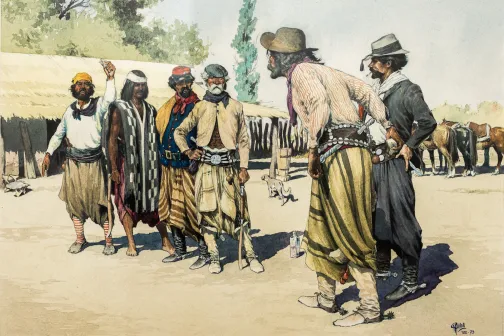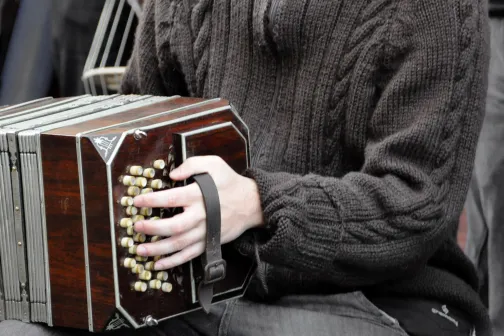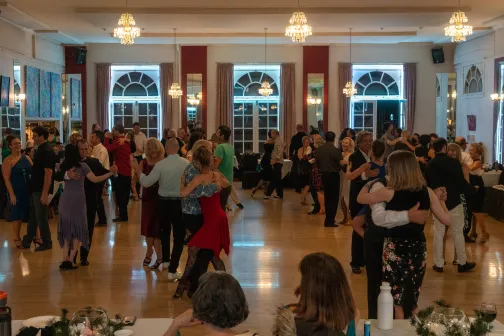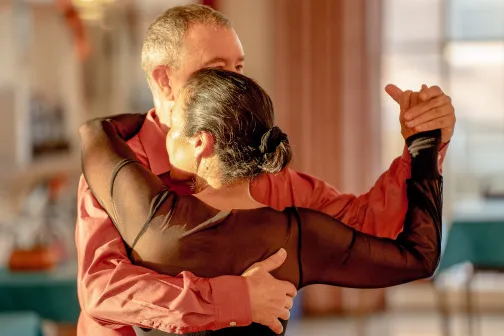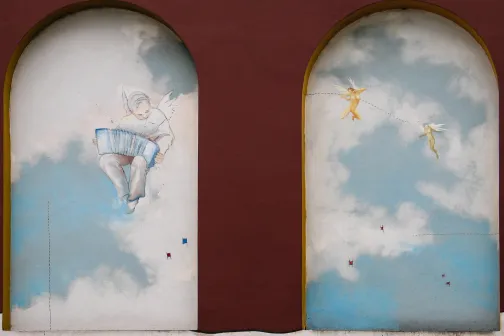Teaching Argentine Tango for about 25 years, I have come around to the idea that there are four levels of achievement. These categories probably apply to pretty much any practice requiring training and skill, such as martial arts, becoming a musician, yoga, athletic prowess, etc.
- Newby
- Intermediate
- Beginner (aka Enlightenment)
- Proficiency (or Mastery)
Notice that "Beginner" comes after "Intermediate" and there is no "Advanced" category. Beginner's mind and Proficiency are characteristics of a lifetime of practice and enjoyment. Fortunately, each of us does have a lifetime we can apply to our practice.
"Newby" should be obvious.
"Intermediate" is the level where you think you know what you are doing. You have taken a lot of classes. You have learned a bunch of steps, and are able to go out dancing. You are starting to have fun, and have confidence in what you are doing. I have noticed that it is possible to reach Intermediate and never arrive at Beginner. This is because most Intermediates continue to learn steps and never truly master any of them. When I go to a tango festival or class, I usually seek out the class labeled fundamentals or technique. I've noticed that "Advanced" classes are usually filled with Intermediates trying to learn more steps, whereas if they would spend time in training at the fundamentals, the steps would be easy.
"Beginner" or "Enlightenment" might (or might not) arrive only after the Intermediate realizes they really a beginner.
"Proficiency", well as I said, proficiency takes a lifetime.
In Tango there are several marks of a Proficient dancer, including:
Musicality: You know the music, you KNOW the music, you embody the music. You have rhythmic drive and dynamics (i.e. both acceleration and suspense). A tango dancer is a musician where your instrument is your partner. Just like a musician playing a Bach Sonata; If you don't KNOW the sonata, you can't play it well. It is savant-like unusual for a musician to be able to sight read a new piece with musicality.
Intuition: You have reached the point where you "channel" tango dancing. The follower reacts to the leader without thinking; the leader reacts to conditions on the dance floor without losing any of the other proficiencies.
Connection: You connect and communicate without mistaken messages. You and your partner move as one; or more accurately, you move integrated with each other - two heads, two bodies and four legs.
Merging: Your "proprioception" sensory net enters your partner and you feel "energetically" (sorry to be mystical) or intuitively what they are doing, perhaps before they do.
Conviction: You truly know what you are doing and your partner feels that you know. You confidently project physical movement through your partner without hesitation or timidity.
Dramatic Space: There is an infinity of space between each step. I call this the Chewy-Nugatty center of tango. We often say "dramatic pause", but it might be more accurate to say dramatic slowdown.
Authenticity: Remember, Argentine Tango is a social activity with a living cultural base in Buenos Aires, Argentina. Outside its culture, it is very hard to understand how tango feels and is perceived in its native atmosphere.
Technique: Last and perhaps least. If your technique is good, then these other aspects become easier. Technique comes to a great extent from repetition of simpler movements until they are attached to your energy, your movements and the music,
Here's the interesting thing:
In your present life experience, I am absolutely sure that you have already achieved zen-like mastery with certain basic things. For example, everyone can stride confidently down the street, with their feet slapping the pavement on time. You can dodge pedestrians on the sidewalk without thinking about it. You can sing or at least hum along to a popular song.
